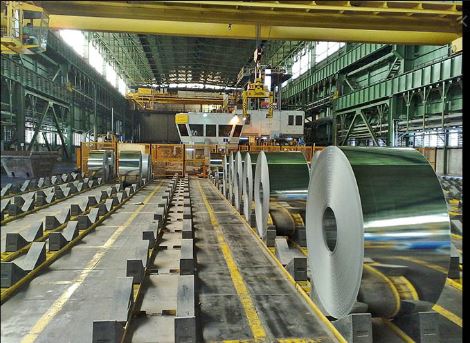Contrary to the misleading statement of a body of developers, a question is worth asking that have the steel prices really risen?
DNA
Islamabad, DEC 14 – The drastically increasing prices of raw material is creating crisis like situation for the struggling steel sector of Pakistan. During the last two years, when major players declared heavy losses, largely the steel sector absorbed the impact of increase of inputs without passing it on to the end consumer.
However, it is becoming extremely difficult for the steel sector to absorb the latest impact of growing price of raw material internationally. In this situation, Pakistan Association of Large Steel Producers urge the govt to remove all duties on the raw material to offset the impact of drastic increase in the cost of raw material which is crossing 400 USD per ton.
Contrary to the misleading statement on the part of a body of developers, the domestic steel bar prices have dropped over the past two years by 8% in dollar terms, from USD 806 in 2018 to USD 746 today. The reason steel prices have increased since 2018 in PKR terms is primarily due to a 45% depreciation of the PKR against the USD, which resulted in increased prices of imported raw materials.
The last few years have been incredibly tough for the steel industry, facing massive increase in costs. The PKR has depreciated by 45% against the USD since January 2018, having a massive impact on raw material and energy costs for the steel industry. Since 2018, electricity costs have risen by 56% and the cost of gas has risen by 116%! Between January 2018 and early 2020, interest rates had doubled from 6% to 13%, increasing financial costs of an industry that is highly leveraged by nature. Finally, the Covid-19 lockdowns exaggerated the losses made by the steel industry and led to a large increase in trade debts, resulting in higher borrowing and financial costs.
Despite the above challenges, the steel industry did not pass through a large portion of these cost increases but reduced profit margins to continue supplying steel bars at a competitive price point to the construction sector. This is evident from profit margins of steel bar manufacturers that shrunk from approximately 8% to 3% between 2018-2020.
While facing severe challenges, industry leaders have also invested billions in bringing latest European technology to reduce energy consumption and improve product quality. Many players have increased capacity to attain benefits of economies of scale and cater for local demand. These are some examples of how the steel industry has been able to reduce steel prices in USD and is now in discussion with various government ministries to start exporting steel bars to regional countries as well.
Looking forward, it seems that steel prices are on the rise world over. Due to global supply chain disruptions due to the second wave of Covid-19, raw material supply is becoming increasingly constrained and steel scrap prices have risen from USD 305 in August 2020 to USD 405 today. This translates to a cost increase of over PKR 15,000/-. With industry margins as low as 3%, companies have no choice but to pass on these increases to consumers. However, steel companies also believe this is a temporary phenomenon. As the Covid-19 disruptions ease, raw material prices will also normalize. With over 300 companies manufacturing steel bars, the steel bar market is highly competitive and reduction in costs are very rapidly translated into lower prices in the local market.
Even amidst an increasing pandemic, everything is not doomed. The industry is upbeat over rising steel demand from the housing and infrastructure sector, which has been spurred by the government’s resolve to kick start the economy. Steel bar manufacturers have spent billions to increase capacity in anticipation of catering to the increased demand from projects such as the PM’s Naya Pakistan Housing initiative.
Contrary to recent statements by a developer, the steel industry is working on extremely low margins to provide cost effective steel bars to the construction sector. In order to make the construction industry more cost effective, the PM’s office should undertake an analysis to see what profit margins the builders and developers are working on and whether some further regulation in this area will help reduce housing prices.
In Pakistan, there are approximately 300 manufacturing units that provide steel to the construction sector, jobs to approximately 100,000 people, government revenue in excess of PKR 100 billion per annum, and have invested over PKR 150 billion in the industry.

















